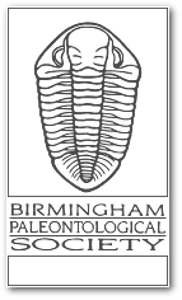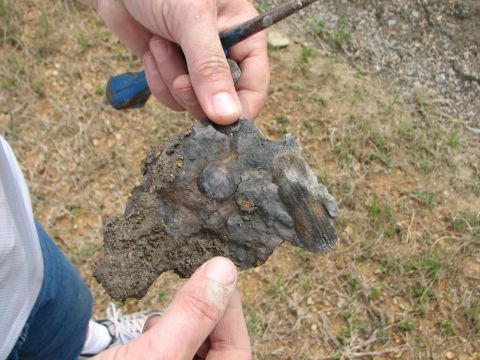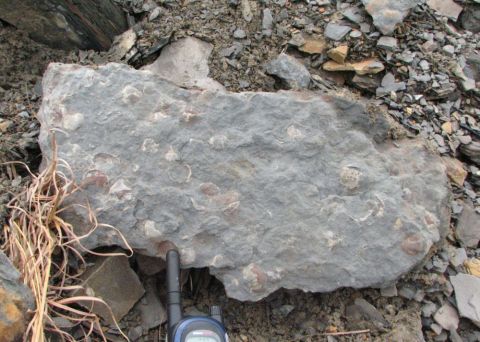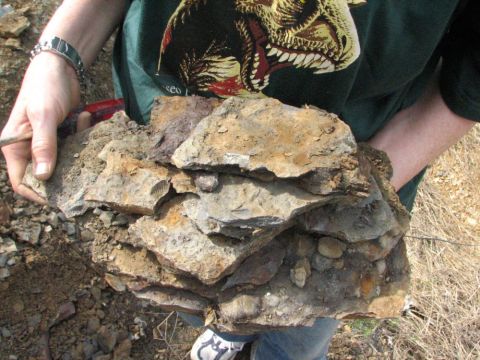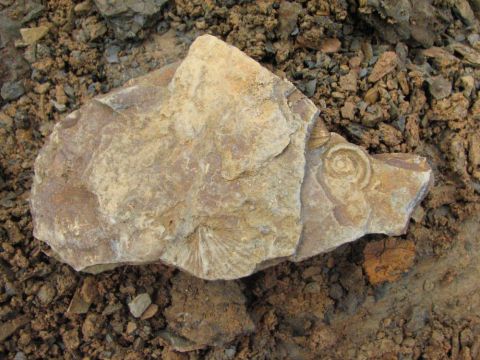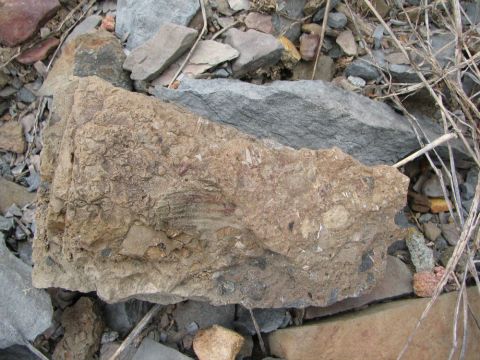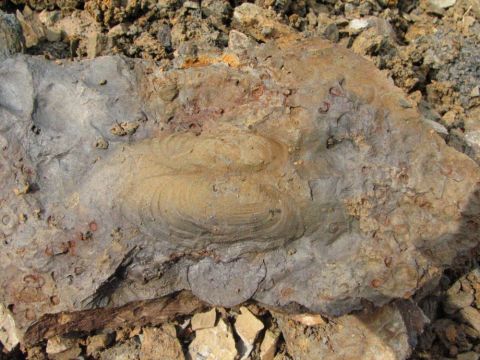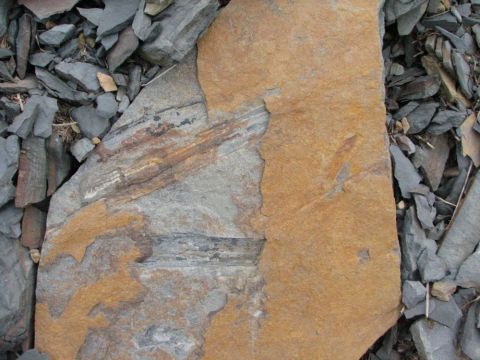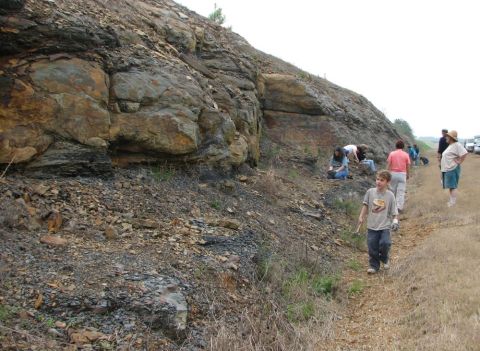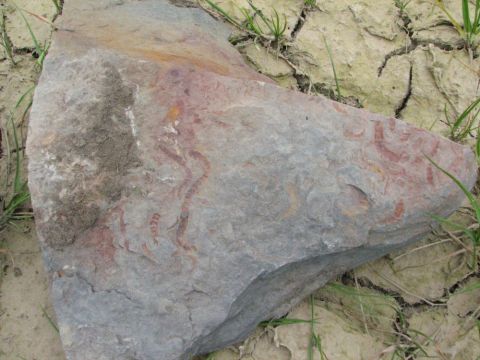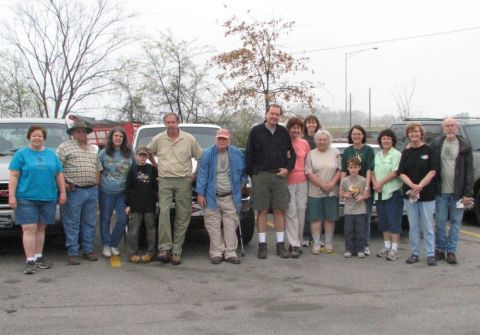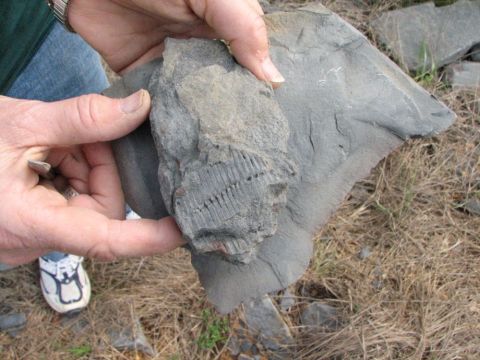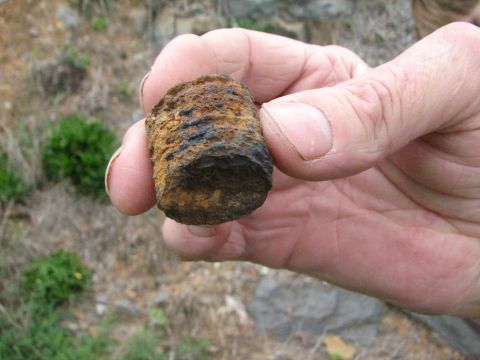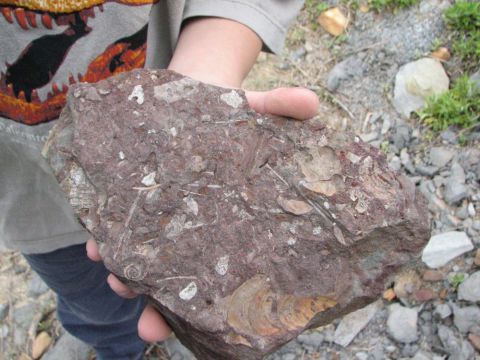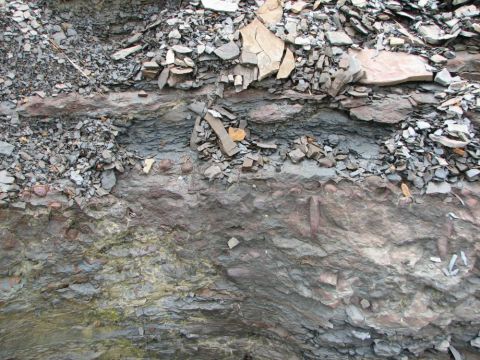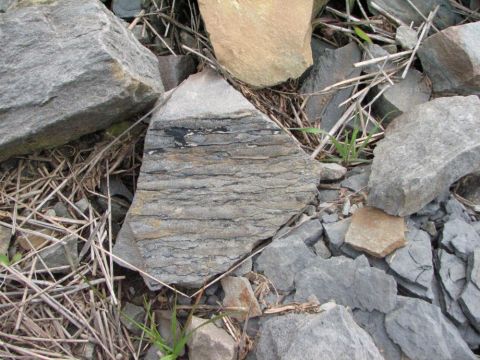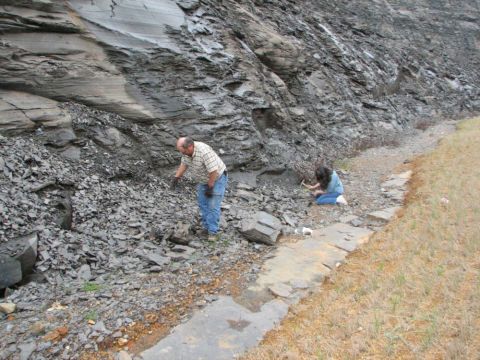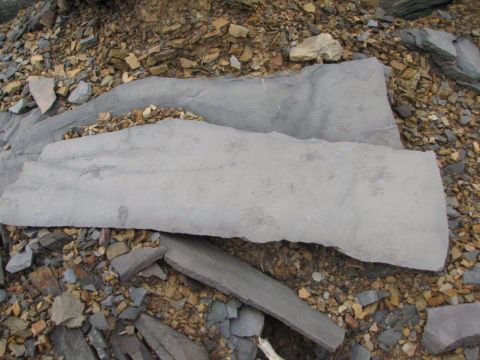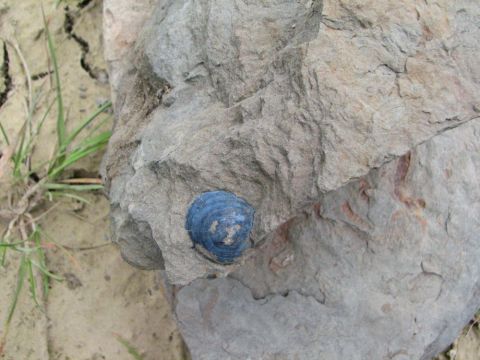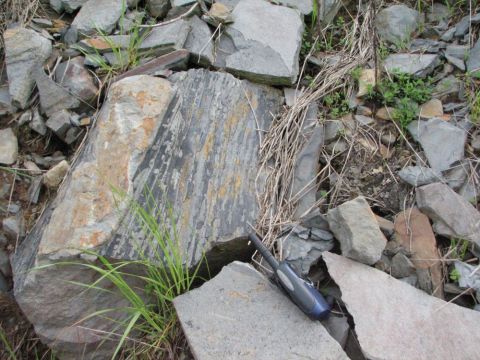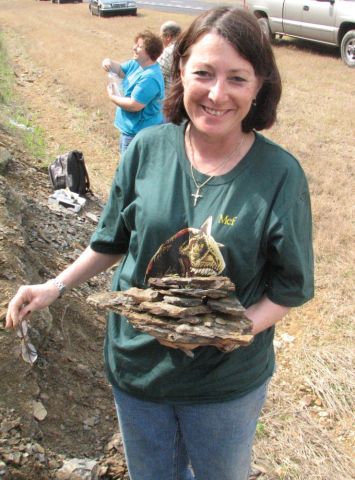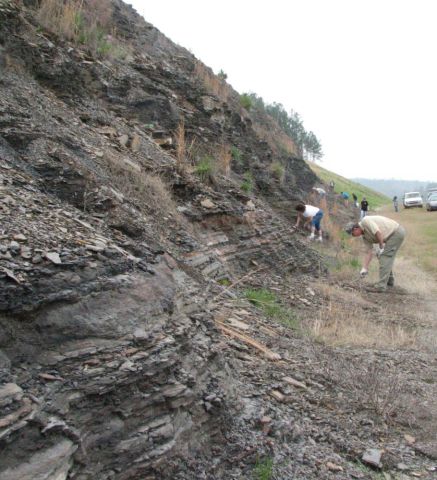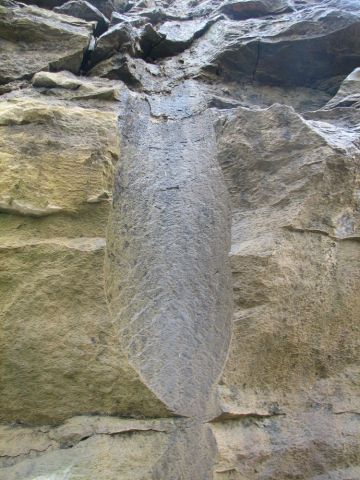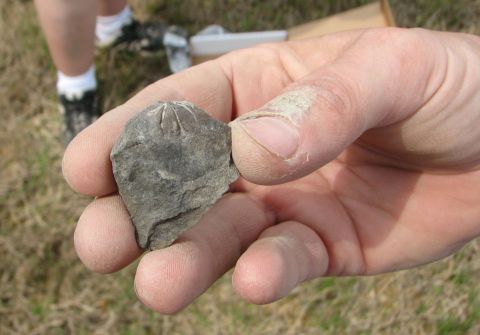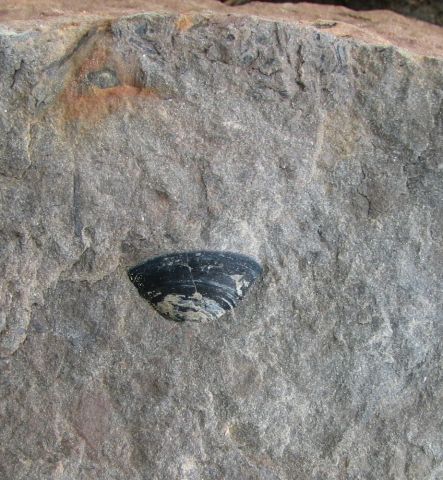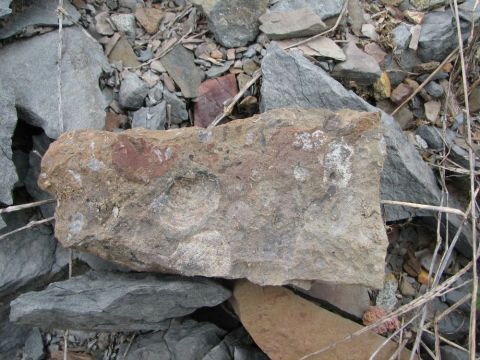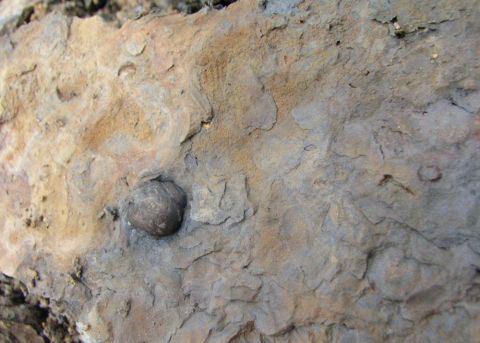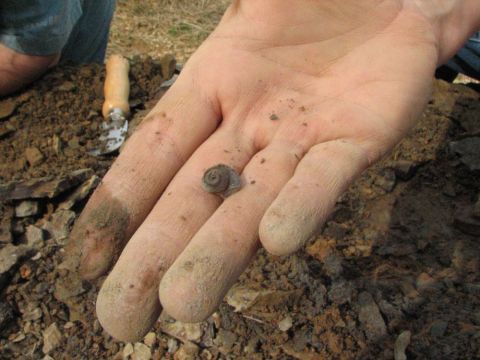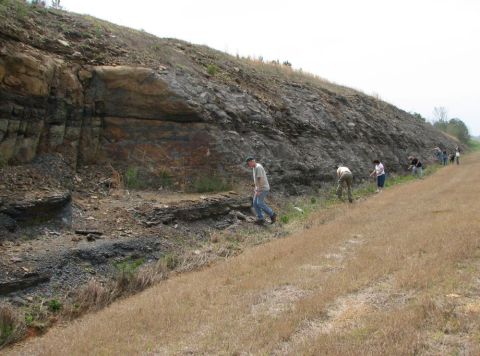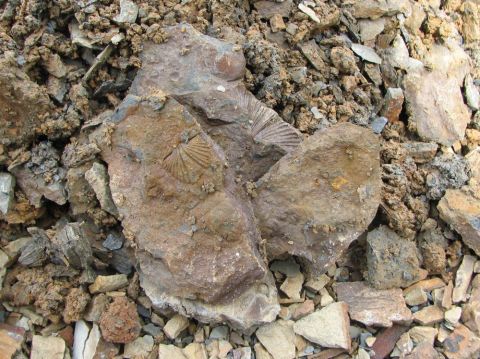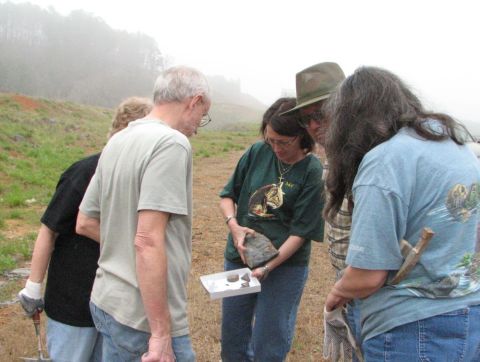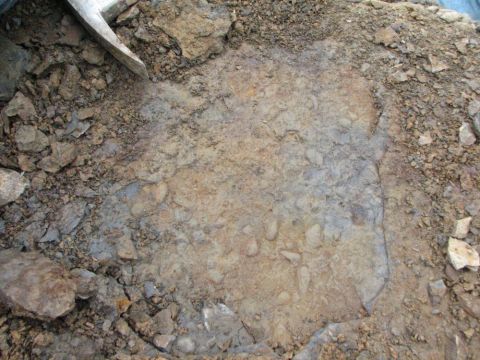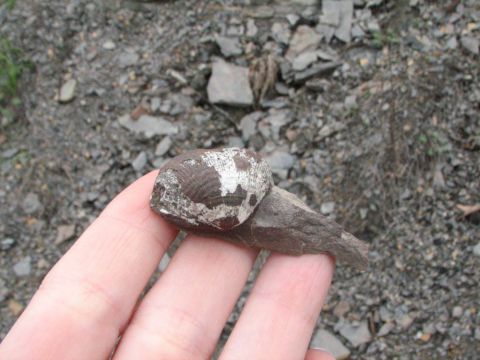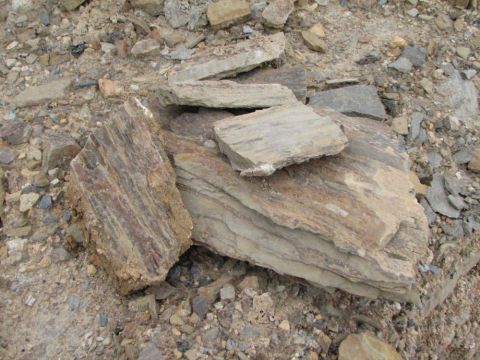The gang
Visitor
Pennsylvanian
08-03-vl-shells-5975
Fossil brachiopod and gastropod
March 29, 2008 - Pennsylvanian Fossils - Walker and Jefferson County, AL
This month BPS spent our field trip exploring road cuts along a new highway, which included 10+ stops to survey various likely looking areas. Though rain was widely predicted, it didn't happen, and the weather was perfect for being outside. The fossil collecting wasn't as prolific as expected, but everyone found quite a few nice specimens, including brachiopods, tracks, and ferns. We also discovered an upright hole that appeared on first glance to be a blasting hole, but on closer examination one could see the impression of a lycopod, perhaps a lepidodendron. Several people worked on an exposed rock shelf where an extensive plate of fossil marine creatures were found.
We also had a quick visit from a couple of guys from North Alabama, who were passing through the area, and stopped to see what we were doing. Amazingly, they had just seen the BPS website the previous week, and were excited to see us out in the field.
Mid-day, we stopped at a local BBQ joint for nourishment and visiting, and then slowly proceeded in the general direction of home, stopping at roadcuts on the other side of the road. We searched carefully for more starfish at the location where they were originally found, but none were spotted this time. As members drifted off home, a few die-hards kept going until almost dark. Our last stop of the day was a construction site, where some pieces of poor quality petrified wood was found.
(Photos courtesy Vicki Lais)
- ‹ previous
- 57 of 62
- next ›
